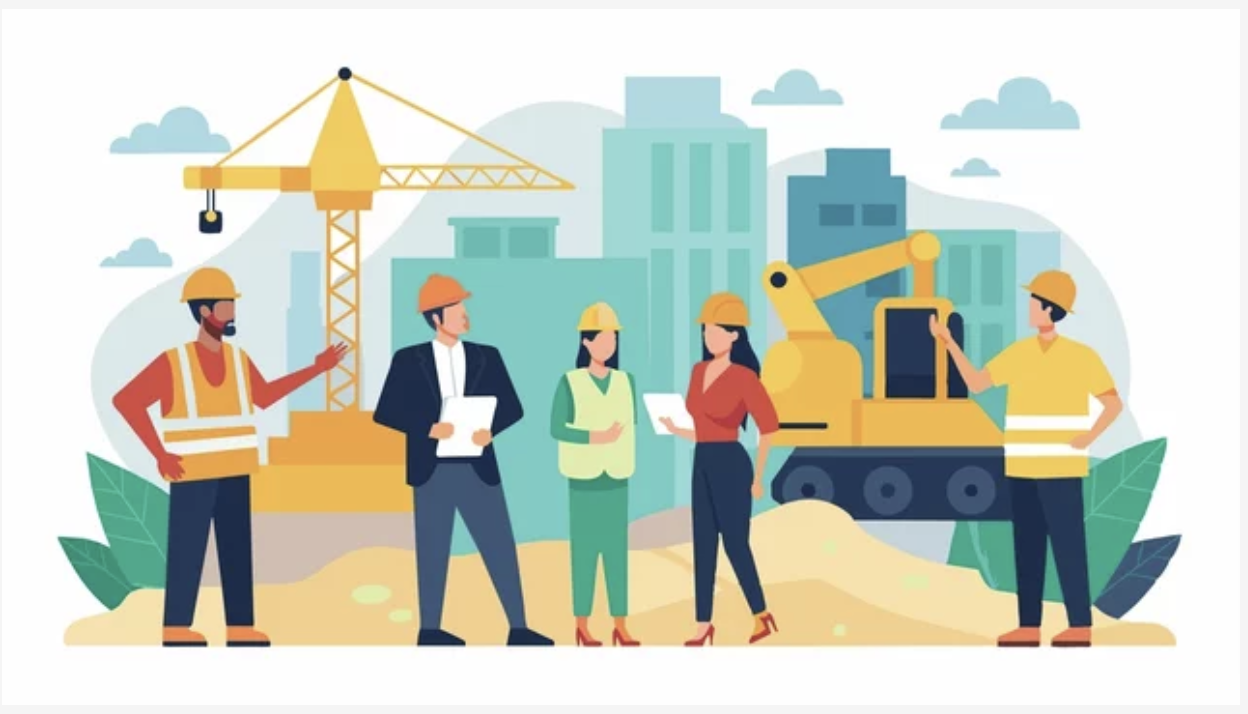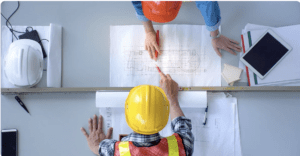
Effective communication for the team is crucial in any construction project, particularly for transportation projects (e.g., airports, transit stations, and highways), when teams are dealing with numerous stakeholders. The stakes can be high and miscommunication can lead to delays, increased costs, and conflicts, making it essential to establish clear and efficient communication strategies. Here are four tips to ensure effective communication on a project with multiple stakeholders.
1. Establish Clear Communication Channels
One of the fundamental steps in ensuring effective communication is establishing clear and structured communication channels. These channels should outline who communicates with whom, how often, and through which project leaders. Here are some key considerations:
- Define Roles and Responsibilities: Clearly define the roles and responsibilities of each stakeholder. Knowing who is responsible for what can prevent confusion and ensure that the right information reaches the right people. Developing RACI charts, drafting integrated organizational charts, and establishing agreements about how both informal and formal communication needs to take place can help simplify complex systems.
- Create a Living Communication Plan: Develop a comprehensive communication plan that details the frequency of updates (monthly, weekly, etc.), types of reports, and methods of communication (e-mail, MS Teams, Slack, etc.). This plan should be shared with all stakeholders at the beginning of the project and regularly updated. It is important to recognize that construction projects tend to interact with key stakeholders at a high level of intensity during certain phases. For example, it is common to interact extensively with stakeholders during the planning and design phases, and then to simplify to one point of contact during construction. As the team ramps back up during commissioning of the facility, the stakeholder interaction ramps back up. It is helpful to review the Communication Plan prior to each of these phase shifts. By establishing these communication channels, you can streamline the flow of information, reduce misunderstandings, and keep everyone aligned toward the project goals.

2. Foster a Collaborative Environment
Collaboration is key to the success of any construction project and Partnering is the cornerstone of this collaboration. Demonstrating how to operate in a collaborative environment helps the team enhance problem-solving, innovation, and improve project outcomes. Here’s how to foster collaboration:
- Regular Meetings: Project teams typically have a weekly progress meeting. If your project has multiple stakeholders, set up a regular, separate stakeholder meeting to discuss progress, address concerns, and plan for upcoming tasks. On large, complex projects, the team will hold Town Hall Meetings to give general updates, and then we will Facilitate stakeholder-driven workshops where the objective is for the stakeholders to ask direct questions of the Core team to ensure the project is delivering on the project goals. These meetings provide a platform for everyone to voice their opinions and contribute to the decision-making process.
- Encourage Open Dialogue: As with anything, bad news does not get better with time. Set up an environment where stakeholders feel comfortable sharing their ideas, concerns, and feedback. This openness can lead to more creative solutions and a more cohesive team.
- Use Collaborative Tools: Utilize collaborative tools such as shared digital workspaces, project management software, and cloud-based document sharing. These tools allow stakeholders to access up-to-date information, collaborate on documents, and track project progress in real-time. It is also important to show design concepts and mock-ups to stakeholders rather than simply tell them or share plans and accept great feedback. Not all stakeholders can interpret construction layouts. Great feedback is about making the design accessible for all.
Creating a collaborative environment helps build trust among stakeholders, ensures everyone is working towards common goals, and enhances overall project efficiency.
3. Be Transparent and Honest
Transparency and honesty are essential components of effective communication. Stakeholders need to trust that the information they receive is accurate and complete. Here’s how to maintain transparency and honesty:
- Share Real-Time Updates: Provide real-time updates on project progress, challenges, and changes. This practice ensures that all stakeholders are aware of the current status and can make informed decisions. Monthly or bi-monthly partnering sessions really help keep the entire team in the loop on project status and progress, particularly for complex or multi-stakeholder projects.
- Admit Mistakes: If an error occurs, admit it promptly and outline the steps being taken to rectify the situation. Construction has had a history where people were not supposed to admit mistakes. I find this lack of vulnerability leads to mistrust. When people own up to errors and are committed to fixing them, this builds credibility.
- Provide Detailed Reports: Offer detailed reports that cover all aspects of the project, including financials, timelines, and potential risks. These reports should be comprehensive yet understandable, providing stakeholders with the information they need to stay informed. I have seen remarkable return on investment from simple updates like manpower curves to help the owner’s team understand when parking will be constrained and monthly burn rates to show how much money is spent per month during construction. A little information goes a long way.
Transparency and honesty not only build trust but also enable stakeholders to collaborate more effectively and respond proactively to any issues that arise.

4. Be Proactive in Addressing Issues
I have learned over the years that high performing project teams are like great restaurants on Yelp. They respond VERY quickly to feedback. When teams hop on issues quickly and make decisions to move the project forward, they tend to prevent minor issues from escalating into major problems. Addressing issues promptly and effectively can keep the project on track and maintain stakeholder confidence. A few tips for staying on track:
- Monitor Progress Closely: Regularly monitor project progress and identify potential issues early. Review your Construction Scorecard as a team to track progress against milestones and confirm you are meeting deadlines.
- Communicate Potential Risks: Ask your stakeholders about project risks and inform them when project risks and challenges are arising, so they can be part of the potential solution and contingency plans.
- Seek Feedback: Regularly seek feedback from stakeholders to identify any concerns or suggestions. This feedback can help you address issues before they become significant problems.
Teams that are proactive in addressing issues build trust and maintain positive relationships with stakeholders along the way.
It should not come as a surprise that effective communication is the cornerstone of successful stakeholder-focused construction projects. When teams establish clear communication channels, foster a collaborative environment, maintain transparency, and jump on issues as they arise, the your stakeholders will feel that they are a part of the team co-creating the project. They will feel more informed, engaged, and aligned with the project’s objectives. These strategies not only enhance project efficiency but help ensure your facility end-users will be more bought in at the end.
– Rob
Rob Reaugh is President of OrgMetrics LLC. He facilitates the City and County of San Francisco Collaborative Partnering Steering Committee and currently works with San Francisco International Airport, San Jose International Airport, BART, Caltrans, and others. He holds a Masters’ Degree in Alternative Dispute Resolution.
For more information please contact Rob Reaugh, RobReaugh@Orgmet.com / (925) 487-2404 (cell), or OrgMetrics, (925) 449-8300.


 Rob Reaugh is President of OrgMetrics LLC. He facilitates the City and County of San Francisco Collaborative Partnering Steering Committee and currently works with San Francisco International Airport, San Jose International Airport, BART, Caltrans, and others. He holds a Masters’ Degree in Alternative Dispute Resolution.
Rob Reaugh is President of OrgMetrics LLC. He facilitates the City and County of San Francisco Collaborative Partnering Steering Committee and currently works with San Francisco International Airport, San Jose International Airport, BART, Caltrans, and others. He holds a Masters’ Degree in Alternative Dispute Resolution.